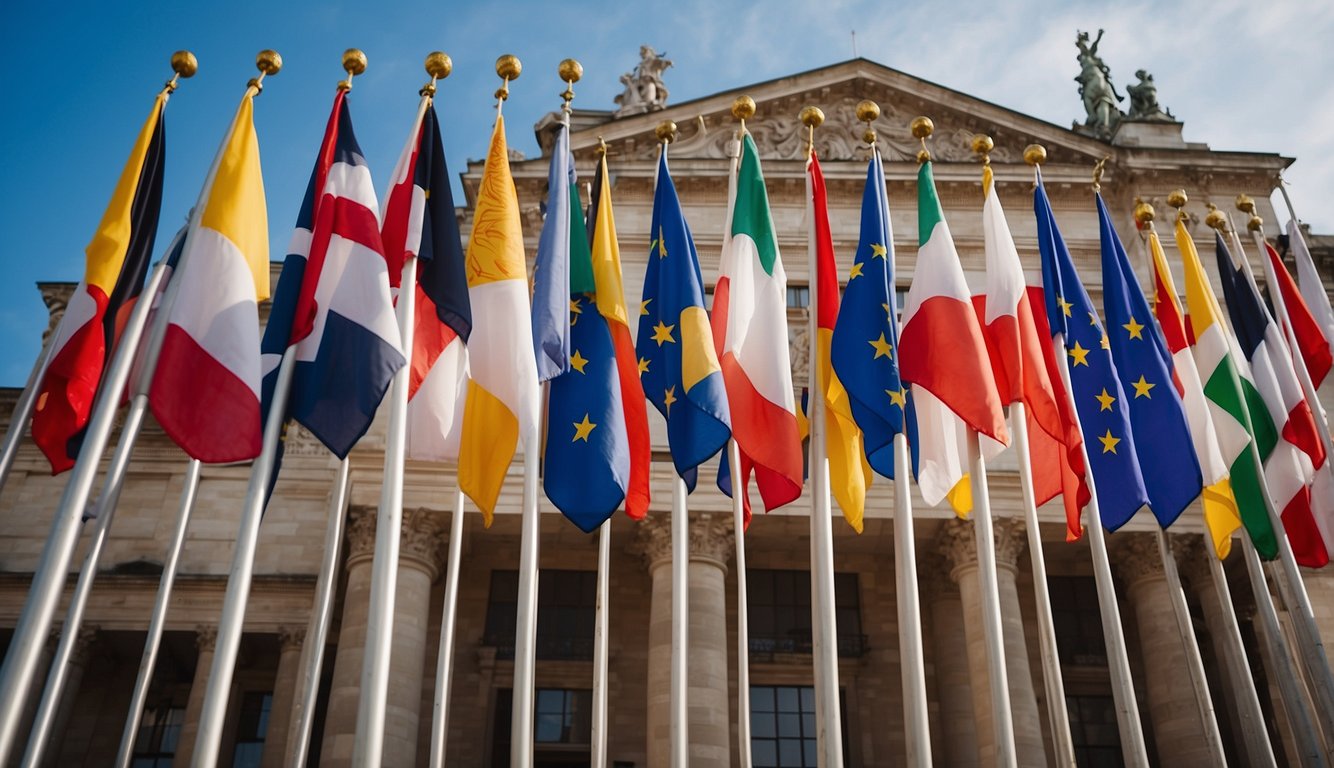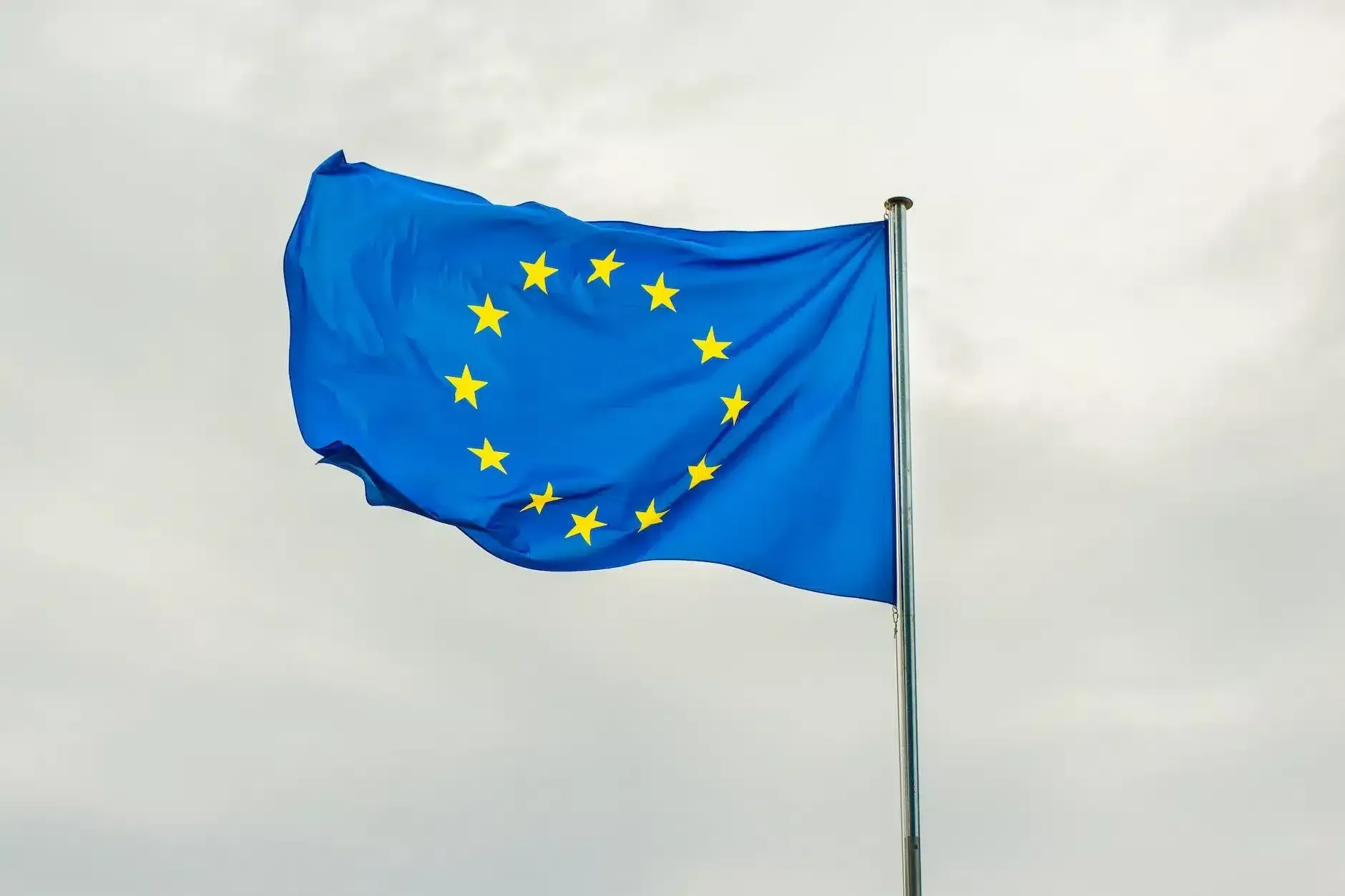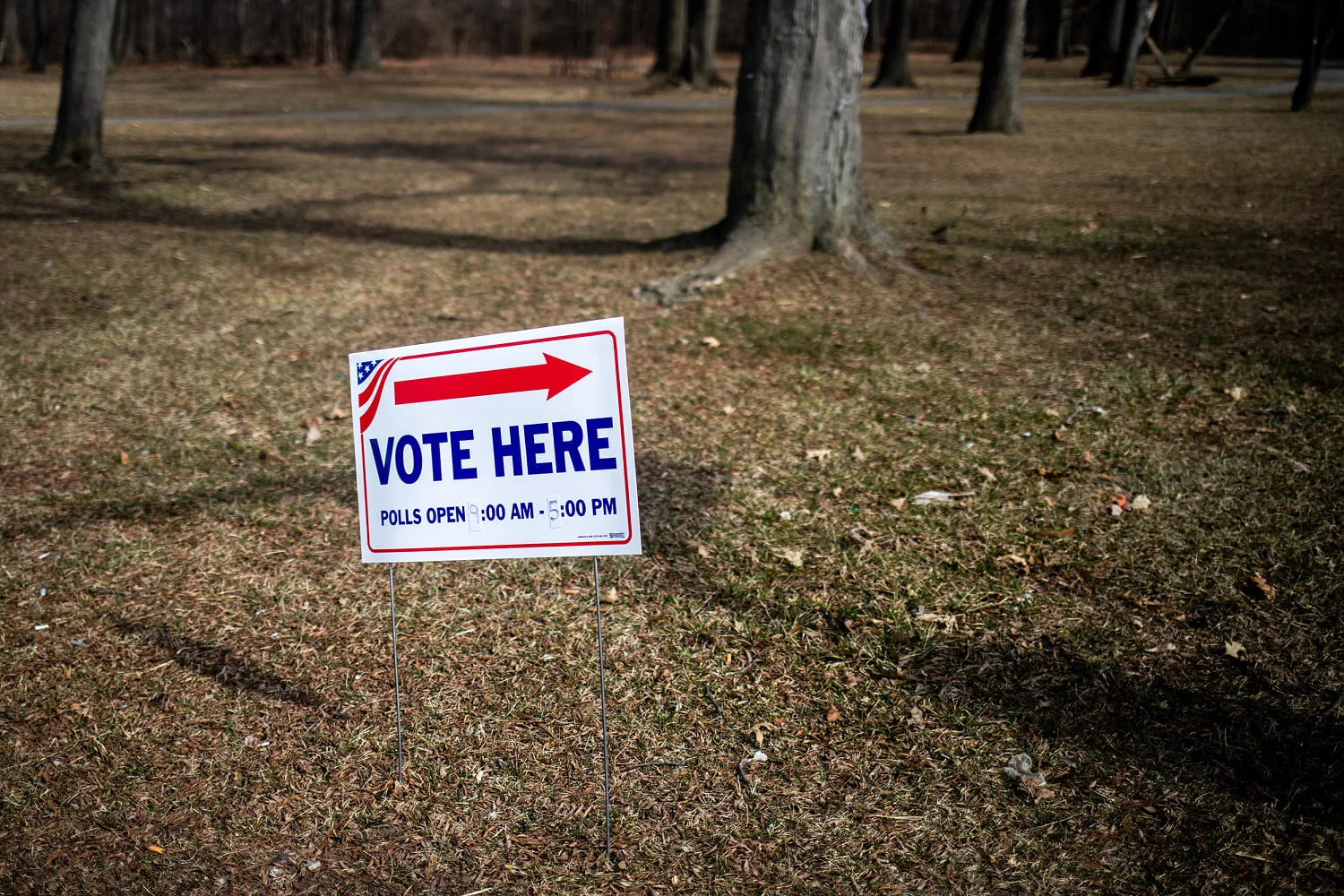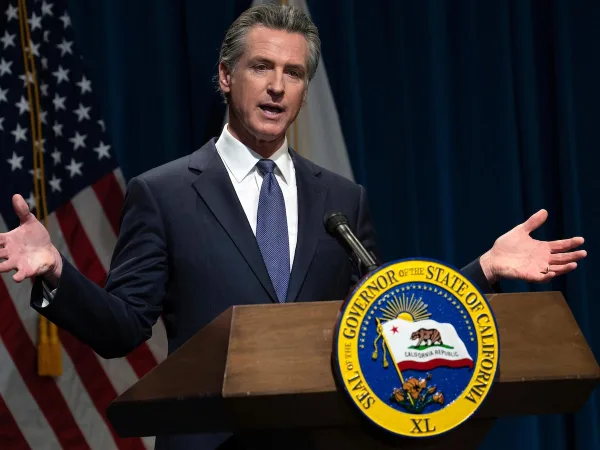Estimated reading time: 15 minutes
The European Union stands as a grand experiment in international cooperation, a concoction of bureaucracy and ambition where member states play a tireless tug-of-war between unity and sovereignty. She offers a smorgasbord of cultures and policies, with Brussels as the chef, trying to keep all the ingredients from ending up in a continental food fight. As the Commission drafts legislation that affects over 400 million citizens, the political soufflé they’re baking can either rise to perfection or collapse faster than a tourist attempting to pronounce “Eyjafjallajökull.”

In the labyrinthine corridors of European power, the Union faces its own mythical Minotaur: the future. The EU’s crystal ball is about as easy to read as the assembly instructions for a piece of flat-pack furniture. Member states squabble like a family dinner over issues from fisheries policies to fiscal unity, and citizens watch with bated breath, speculating whether their leaders will deliver a future that continues to cement peace and prosperity, or if they’ll throw in the towel and leave the table.
But fret not, for the EU isn’t all doom, gloom, and economic forecasts. It’s a bold, boisterous political bloc with a knack for making headlines and throwing curveballs that keep pundits guessing. As Europe charts its course through choppy waters, the European Commission holds the compass, but it’s the citizens who keep the wind in the sails. Whether the Union will emerge stronger or take on water in the process, only time will tell, but you can bet your last euro it’ll be an intriguing voyage.
Historical Milestones and Brexit Bonanza

As the European Union juggled with treaties like a circus performer with flaming batons, Brexit arrived with the subtlety of a bull in a china shop. This section, dear reader, serves up the platter of significant EU treaties before diving into the all-you-can-eat buffet that is Brexit.
Symphony of Treaties
The European Union’s history is a veritable mixtape of treaties, each like a hit single contributing to the chart-topping success of regional integration. The Maastricht Treaty was the lead track, belting out the birth of the EU and the euro in the 90s – talk about Y2K-ready! Then you had the Treaty of Amsterdam, fine-tuning the harmonies of the Union, followed by the Treaty of Nice, which was essentially the remix that nobody asked for but everyone needed, addressing the complications of an expanding band of members. Finally, the Lisbon Treaty dropped like a surprise album in 2007, amping up the EU’s values and decision-making grooves, not to mention setting the stage for a dramatic solo exit with its infamous Article 50.
Brexit: The Unending Goodbye
Ah, Brexit, where does one start with this political equivalent of a rollercoaster stuck upside-down? The United Kingdom certainly grabbed the headlines – and migraines – when they invoked Article 50 and said “Cheerio” to the EU. Yet, this was no clean break; it was the awkward ‘ex’ popping up when least expected, causing a hullabaloo at every trade discussion and fishing agreement. The dance of departure saw agreements made and broken, deals drafted and discarded, and the future of the Anglo-Liberal Model more hotly debated than the finale of a reality TV show. As the plot thickens, one ponders how the narrative for entities like Ukraine, aspiring to tighten ties with the EU, adapts to the continuing Brexit bonanza.
Politicking and Power Plays

In the spirited playground of European politics, power is the favorite swing, and everyone wants a turn. Elections are the matches where teams vie for the victory lap around Brussels’ corridors.
Elections Extravaganza
European politics are never short of drama, especially when the European Parliament throws its grand soirée known as election time. Think of it as the continent’s most intricate dance-off, where every move is calculated, from the heel turn to the side step. Candidates strut their stuff, hoping to waltz their way into the political limelight. In an all-out battle of ballots, the stakes are high as member states send their champions to the big league, each hoping to tip the scales in the ever-evolving narrative of European democracy.
- Key Players: The MEP hopefuls who’ve been rehearsing their policy pitches.
- 2019 Throwback: The last European election shindig saw the greens growing and the far-right flexing.
Kommission Kapital
After the confetti settles post-elections, it’s time to play musical chairs for the biggest seat of them all—the Commission President. This is where the political elite show their hand, hiding their aces and playing up their face cards. It’s a prestige post that exudes as much influence as it does power, shaping the bloc’s policies and image.
- Current Boss: One who not only steers the legislative leviathan but also faces the symphony from member states.
- Democracy or Power Play?: Debate has sparked on whether the role truly reflects the will of the people or if it’s a backstage deal amongst EU leaders.
In this match of Politicking and Power Plays, it’s about who blinks first and who holds the aces when the music stops.
Economic Escapades and Market Movements
Economic trends in the European Union can often resemble a high-stakes game of chess, where each move could lead to prosperity or peril. Let’s embark on a jaunty jaunt through the EU’s financial fandangos.
Single Market Shenanigans
The EU’s Single Market is not just a trading area; it’s a bustling bazaar of 27 member states playing a never-ending game of economic Twister. Here, competition is key – every player vies for the top spot, implementing strategies to boost their trade muscles while keeping a keen eye on currency contortions.
- Advantages: The Single Market has spun a web of economic ties that would make a spider jealous, ensuring freedom of goods, capital, and services.
- Challenges: However, the tapestry is intricate; policies must weave through a labyrinth of national interests.
Wallets, Woes, and Wins
Economic forecasts can be as moody as a cat that missed its nap, but amid the temperamental graph lines lie tales of prosperity and predicaments. The Banking Union stands as the financial fortress, aiming to safeguard savers’ silver and stabilize the banking battleground.
- Upsides: A collective shield against banking blues, minimizing risks and elevating confidence in the euro.
- Hurdles: Winning the trust of Joe and Josephine Public has been akin to convincing a cat to enjoy a bubble bath.
With every fiscal flip and monetary maneuver, the EU strives to tickle the funny bone of fortune, hoping their economic escapades inch towards triumph with a symphony of markets humming in harmony.
Environmental Endeavors and Climate Crusades
In the grand theater of global policymaking, the European Union (EU) is like an enthusiastic director, orchestrating its “Environmental Endeavors and Climate Crusades” with gusto. They aim not just to tackle climate change, but to give it a good, old-fashioned European headlock, spinning it into a whirlwind of green initiatives and carbon-cutting capers.
Green Dreams
The EU has been knitting a quilt of environmental strategies so comprehensive that even Mother Nature might want one. Under the cozy layers, there’s Climate action, a prima donna in the EU’s production, with a spotlight on reducing greenhouse gases with the precision of a German engineer. And what’s their pièce de résistance? Why, the European Green Deal, dreaming to turn the continent into the first climate-neutral bloc by 2050. Sift through the strategy, and you’ll find it peppered with renewable energies, a blooming bouquet of eco-friendly policies that, they hope, will make even the smoggiest of cities take a breath of fresh air and say, “Ah, that’s better!”
Sustainable Struggles
Crafting a greener continent isn’t all sunshine and wind turbines, though. The EU faces Sustainable Struggles, like a Herculean challenge, but with more bureaucracy and less muscle oil. They reckon they need a treasure chest of €1.5 trillion per year to meet their 2050 climate tag. With a nod to energy efficiency and an eye on sustainable industries, they’re busy turning green dreams into actual plans, while navigating the high seas of environmental regulation.
The crowd is watching—spectators with binoculars fixed on a low-carbon future. The EU, with their environmental script in hand, leads the chorus, hoping to inspire the rest of the world to join in their green-tinged operetta.
Keeping up with Geopolitics
In the grand theater of international relations, the European Union (EU) fancies itself as a chess grandmaster, maneuvering between east and west while navigating the ever-so-delicate dance of diplomacy and security. Here’s how the bloc is attempting to checkmate challenges and schmooze with its neighbors.
Neighborly Natters with Russia and Turkey
Russia, with its matryoshka-like layers of complexity, is a neighbor the EU can neither ignore nor invite over for tea without a few caveats. The tightrope walk involves managing a relationship marred by security concerns, particularly with the tension on the EU’s eastern flanks. The EU’s goal? To ensure that the eastern borders do not become a game of Risk, while also fostering dialogues that could lead to Russia passing the sugar instead of throwing the salt.
Turkey is like that friend who always brings drama to the party but also knows all the best gossip. As a key player straddling east and west, Turkey’s role in regional stability is about as crucial as finding a comfy chair at a summit. The EU’s foreign policy tango with Turkey includes a mix of geopolitical cha-cha and strategic slow dancing, aimed at bolstering their collective security dance floor.
Global Challenge Chess Game
When it comes to the global challenge chess game, the EU is aiming to be the player that doesn’t need to compensate with overly elaborate moves – simple, strategic, and to the point. They keep their knights and bishops aligned, focusing on a foreign policy that can outsmart rather than outspend. From trade agreements to climate change pacts, the EU uses its queen to protect the king, ensuring the board remains in a state of controlled balance rather than disarray.
Whether dealing with the unpredictability of international politics or refining the art of keeping both allies and frenemies at bay, the EU stays engaged in a geopolitical puzzle, wit as sharp as a pawn’s first double move.
Society and Cultural Melting Pot
In the European Union’s grand tapestry, cultural threads weave through each policy and street corner, creating an elaborate dance of diversity. It’s where the polka meets the paso doble, and societal norms are as assorted as a box of chocolates at a duty-free shop.
Diversity Dances
They say it takes two to tango, but in the EU, it’s a full-on flash mob with every nationality bringing its own moves to the floor. Cultural festivals light up cities like eco-friendly bulbs—vibrant and varied—showcasing a kaleidoscope of customs that could make a peacock jealous. Education plays a significant role in choreographing this beautiful madness. By encouraging student exchanges and cross-border education programs, the EU turns schools into melting pots where Greek myths mix with German philosophy, and French cuisine is served with a side of Spanish zest.
-
Cultural Exchange Programs:
- Erasmus+
- Creative Europe
-
Key Educational Initiatives:
- Bologna Process
- Horizon Europe
Educational Enigmas
Universities in the EU are like those mystery adventure books where students choose their educational journey, and every page turn promises enlightenment with a hint of unexpected plot twists. They’re factories producing not just graduates, but also cultured, rights-aware citizens—ready to debate Kant in one breath and defend human rights in the next. Meanwhile, lectures spill out of the academic halls, and debates on rights become the new spectator sport. Education ensures that diversity is not just tolerated but celebrated.
-
Rights-focused Curricula:
- Human rights law
- Cultural studies
-
- Non-discrimination
- Special Educational Needs (SEN) programs
Teaching methods, as diverse as the students, aim to equip every learner for the grand stage of Europe—a continent where the question “Where are you from?” often leads to a history lesson and a recipe exchange.
The Digital Transformation Tryst
Europe’s courtship with the digital era is less about candlelit dinners and more about firing up the broadband. A fusion of aspirations and applications, the EU’s digital transformation is an orchestrated dance between governance and gigabytes.
Cyber Serenades
Under the symphonic skies of cyberspace, the European Union has been composing a love story with communication. They’ve serenaded the digital landscape with measures that boost connectivity and ensure that even the quaintest corner of Europe can stream the Eurovision Song Contest without a hiccup. They’ve harmonized laws and flirted with supercomputing capabilities, giving industries a competitive edge in a world where data sings louder than divas.
Innovation Infatuations
The EU’s waltz with innovation is less like fleeting summer love and more a long-term engagement. They’ve been batting their eyelashes at artificial intelligence and making passes at sustainable tech practices to drive the kind of industry gospel that turns rust belts into silicon valleys. And let’s not forget their starry-eyed affair with space; it’s not just about putting satellites into orbit, but about lacing the European sky with digital constellations that can guide farmers, drivers, and urban planners alike.
Defense Dilemmas and Security Soirees
In the grand ballroom of geopolitics, the European Union finds itself in a bit of a foxtrot, trying to balance grace with agility in the face of robust defense challenges and security shindigs. The dance card is full, folks, with moves ranging from the minuets of military maneuvering to the hearty handshakes with NATO.
Military Minuets
In the intricate dance of military capacity, the European Union is perfecting its steps to a choreography that involves not just fancy footwork but also significant firepower. These are not your quaint dances of yore but robust routines intended to strengthen Europe’s defense capabilities. Amidst all this, there are calls for Europe to contribute more effectively to territorial defense and maintain a deterrent posture that keeps onlookers on their toes.
Alliance Tango with NATO
Like any well-practiced tango, the relationship between the European Union and NATO requires both passion and precision. Coordination on security resonates through each swivel and step, as they aim to maintain a seamless partnership. This partnership balances solo performances with a collective choreography, as NATO and the EU align their defense policy rhythms. The continuation of this alliance tango is essential—the world is, after all, watching this performance unfold on an increasingly complex stage.
Expansion Enigmas and Neighboring Novelties
The European Union is no stranger to growth, but like a mystery novel where the butler did more than just the dusting, the plot of EU’s expansion has its twists and turns. Let us waltz through the enigmas of enlargement and the quirky quandaries of the EU’s non-member buddies.
Enlargement Riddles
When it comes to adding new members, the EU doesn’t just throw a party and hand out memberships like party favors. It’s a process more meticulous than a Swiss watchmaker. One might think that the European Union’s invitation to Ukraine and Moldova, with Georgia getting a wink and a nudge, had all the makings of a geopolitical soap opera. Yet, this isn’t an overnight affair; the accession protocol is more complex than a Rubik’s Cube in a hall of mirrors. They’re hustling through reforms, proving le sérieux in a bid to join the exclusive club.
On the flip side, not everyone’s itching to get full membership. Norway and Switzerland, those rebels, snub their noses at full-blown EU membership while still wanting to dance at the party. They engage in various treaties, share some market perks, and often bring a tasty platter to the table – think rich cheeses and oil – without signing the full guestbook.
Schengen Shindigs
Oh, the Schengen Area, the Eurozone’s fun-loving cousin, where internal borders are as passé as a 90’s boy band. In this free-roaming bonanza, one could zip from the vino of Italy straight to the strudels of Austria with nary a “Your papers, please!” It’s continental hopscotch for countries and a unique EU novelty that even non-EU members like Norway and Switzerland can’t resist. They’ve given a hearty “Ja!” to the Schengen soiree, proving that you don’t need the full EU membership to join some of its coolest festivities.
But here’s a spicy pickle: not every EU member state takes a swig of the Schengen Kool-Aid. Bulgaria, Romania, Croatia, and even Cyprus, are like partygoers stuck in the kitchen while the rave continues in the living room. Their Schengen status is a “Work in Progress” sticker that has yet to peel off.
So, as we delve into the labyrinthine journey of EU expansion and neighboring nuances, it’s a roller coaster of policy, diplomacy, and the occasional bureaucratic boogie. Stay tuned to see if the EU’s borders will stretch or if the Schengen Area’s guest list gets any longer.
Health, Heartbreak, and Hope
The European Union’s health narrative is akin to a rollercoaster ride complete with its thrilling highs and unforeseen dips. This section takes a whimsical peek into the turns and twirls of health crises management and the dance of well-being policies that aim to put a spring in the step of the European populace.
Pandemic Plot Twists
Amidst the chaos of the COVID-19 pandemic, the EU found its health policy script flipped on its head. They thought they had the choreography down, but a novel virus decided to jazz things up, prompting an impromptu improvisation. The plot thickened with each wave, cueing the bloc to enhance its collective resilience, ultimately leading to the encore presentation: a proposal for a sturdier European Health Union.
Well-being Waltzes
Post-pandemic, the EU is twirling towards a more holistic well-being waltz. They are tuning into the rhythm of health as not just the absence of illness but the presence of vibrancy. With an ear to the ground, the governance bodies have commenced to orchestrate policies harmonized with the new EU global health strategy, ensuring each step toward sustainable health is en pointe. They are intent on demonstrating that physical and mental wellness is, indeed, a fundamental human right, deserving of a front-row seat in the policy performance hall.




